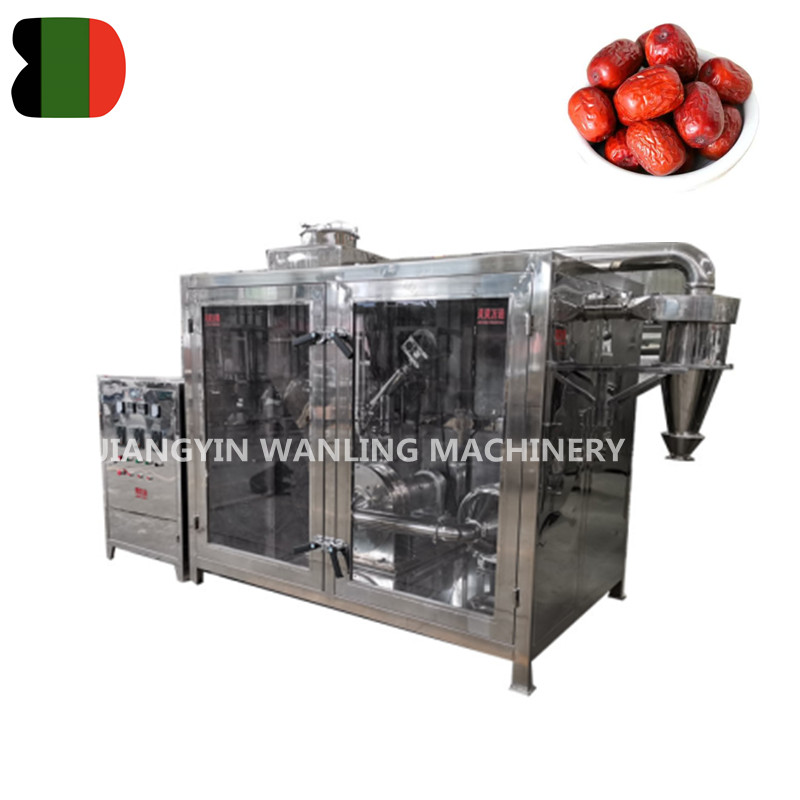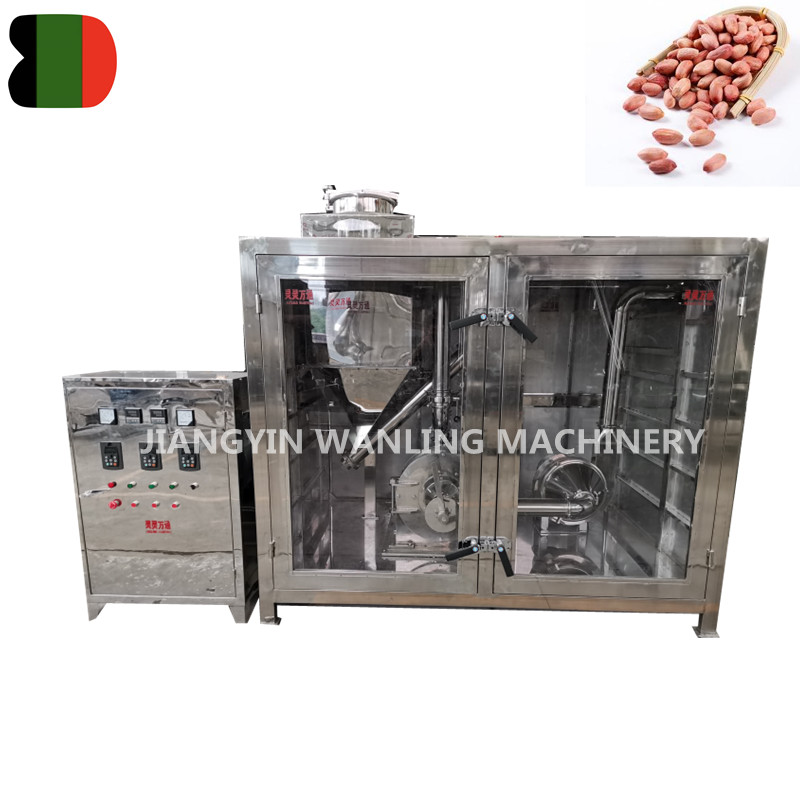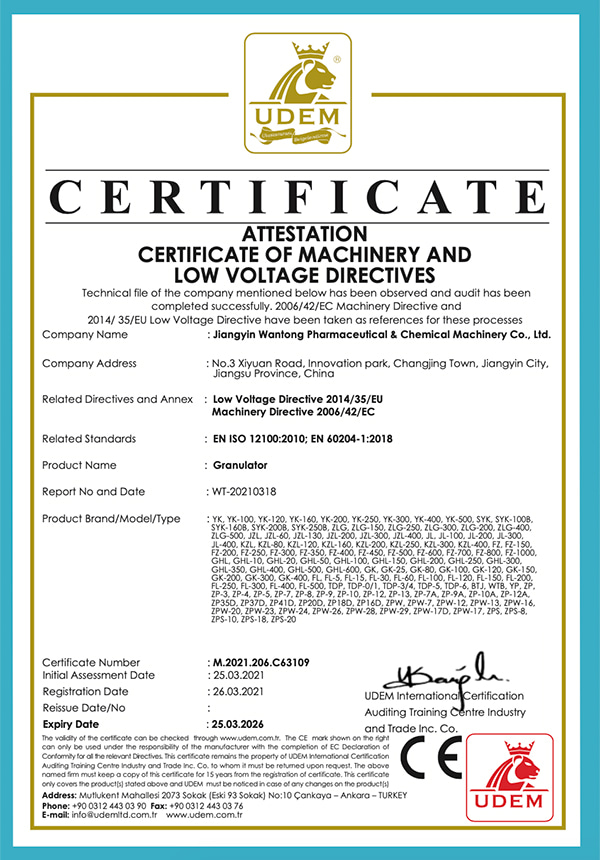Cryogenic Grinder Manufacturer
-

WLD Low Temperature Spice Cryogenic Mill
The liquid nitrogen crusher can be widely used for material crushing in pharmaceutical, food, chemical industry, national defense , scientif... -

WLD Low Temperature Cryogenic Grinder Mill Machine
This WLD low temperature cryogenic grinder mill machine surpasses traditional grinding methods, particularly for heat-sensitive materials th... -

WLD low temperature nuts cryogenic grinder
This WLD low temperature cryogenic grinder can grind nuts which have high oil. It can grind nuts to fine powder more than 100mesh. The nut g...
The cryogenic grinder is a grinder suitable for oily materials, insects, and some special oil material that cannot be crushed by conventional crushers. Its freezing technology can well preserve the original characteristics of materials and meet some requirements of customers on fineness.

About Us
Honor
-
 Honor
Honor -
 CE
CE
News
-
Industry News 2025-10-22
1. What a Horizontal Ribbon Mixer Is and Where It’s Used A horizontal ribbon mixer is an industrial ...
View More -
Industry News 2025-10-16
A tray dryer is a batch drying equipment widely used in the pharmaceutical, food, and chemical indus...
View More -
How does a double cone blender compare to ribbon blenders or V-blenders for industrial applications?Industry News 2025-10-09
A double cone blender has distinct advantages and limitations when compared to ribbon blenders and V...
View More -
Industry News 2025-10-01
Electric-Powered Tray Dryers Advantages: Precise and Stable Temperature ControlElectric-powered tr...
View More
Industry Knowledge Expansion
What are the benefits of using a cryogenic grinder compared to conventional grinders?
Preservation of Material Properties: Cryogenic grinding preserves the chemical and physical properties of the material being processed better than conventional grinding methods. This is particularly important for heat-sensitive materials or those prone to degradation during grinding.
Enhanced Fineness: Cryogenic grinding can achieve finer particle sizes compared to conventional grinding methods. The low temperatures make the material more brittle, resulting in finer and more uniform particle sizes.
Reduced Heat Generation: Traditional grinding processes generate heat, which can lead to issues such as material degradation, loss of volatile components, and equipment wear. Cryogenic grinding minimizes heat generation due to the low temperatures involved, reducing these potential problems.
Increased Efficiency: The brittleness induced by cryogenic temperatures allows for more efficient grinding, requiring less energy input compared to conventional methods to achieve the same particle size reduction.
Versatility: Cryogenic grinding can handle a wide range of materials, including those that are oily, sticky, or fibrous, which may pose challenges for conventional grinders.
Improved Product Quality: The ability to maintain the integrity of the material's properties and achieve finer particle sizes often results in higher-quality end products with better consistency and performance.
Extended Equipment Lifespan: Since cryogenic grinding generates less heat and mechanical stress on the equipment, it can lead to reduced wear and tear, thus prolonging the lifespan of the grinding equipment.
Reduced Risk of Contamination: Cryogenic grinding is typically performed in a closed-loop system, minimizing the risk of contamination from external sources, which is crucial for industries such as food processing and pharmaceuticals.
What safety precautions are necessary when operating a cryogenic grinder?
Personal Protective Equipment (PPE): Wear appropriate PPE, including insulated gloves, safety goggles, a lab coat or protective clothing, and closed-toe shoes to protect against cold temperatures, spills, and flying debris.
Training and Familiarity: Ensure that operators are adequately trained in the safe operation of the cryogenic grinder and familiar with the specific procedures for handling cryogenic materials.
Ventilation: Operate the cryogenic grinder in a well-ventilated area to prevent the accumulation of gases or vapors released during the grinding process.
Temperature Monitoring: Regularly monitor the temperature of the grinder and surrounding equipment to prevent overheating or cold-related injuries.
Emergency Procedures: Have clear emergency procedures in place, including how to handle spills, leaks, or equipment malfunctions. Provide training on emergency response protocols to all personnel involved in operating the cryogenic grinder.
Material Handling: Follow proper procedures for loading and unloading materials into the grinder to minimize the risk of spills or exposure to cryogenic substances.
Equipment Inspection: Conduct routine inspections of the cryogenic grinder and associated equipment to ensure that all components are in good working condition and properly maintained.
Fire Safety: Keep fire extinguishers readily accessible in the vicinity of the cryogenic grinder and ensure that personnel are trained in their use.
Avoidance of Contact: Avoid direct contact with cryogenic materials and surfaces, as they can cause frostbite or cold burns. Use tools or protective barriers when handling materials or accessing the grinder.
Storage and Handling: Store cryogenic materials in designated containers and areas that are well-labeled and compatible with the specific materials being used. Follow proper handling procedures to prevent spills or contamination.



 Español
Español
